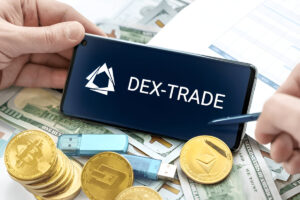INTRODUCTION
Decentralized finance, sometimes known as DeFi, has been one of the fascinating developments in the financial sector recently. DeFi wants to open a more transparent and easily available financial ecosystem for everyone by cutting middlemen. But just what is DeFi, and how does it operate? The principles of DeFi, its main elements, and what this means for the future of finance will all be broken out in this article from the foundations.
WHAT IS DECENTRALIZED FINANCE (DEFI)?
Commonly referred to as DeFi, Decentralised Finance is a movement within the bitcoin sector seeking to replicate conventional financial systems including lending, borrowing, and trading but distributedly. DeFi runs on blockchain technology instead of banks or financial institutions, hence it is open, permission less, and accessible to everyone with an internet connection.
DEFI’S MECHANISM
Operating on blockchain networks mostly Ethereum, DeFi uses “smart contracts” to automatically carry out agreements between users. Smart contracts are self-executing agreements with directly written in code terms of agreement. This system guarantees, without a third party, transactions occur as intended.
THE FUNCTION OF SMART CONTRACTS
DeFi apps are built mostly on smart contracts. Without a bank, they let consumers take out loans, trade assets, and earn interest. Smart contracts lower costs and improve transaction transparency by eliminating middlemen, therefore transforming DeFi into a breakthrough towards a trustless financial system.
KEY COMPONENTS OF DEFI
LENDING AND BORROWING

- POPULAR DEFI USE CASE: Two main uses for DEFI are lending and borrowing.
- TRADITIONAL FINANCE:
- Traditionally, finance calls for banks as middlemen.
- Term and charge policies are decided by banks.
- DEFI ADVANTAGE: Users of DEFI Advantage can lend or borrow straight from one another. Sometimes, it provides reduced interest rates. Uses crypto assets as collateral, therefore lowering the demand for conventional banks.
DECENTRALIZED EXCHANGES (DEXS)
· WHAT ARE DEXS?:
- Users of DEXs, sometimes known as Decentralised Exchanges, may exchange cryptocurrencies.
- Run without depending on a centralized platform.
· HOW DEXS WORK:

- Smart contracts enable peer-to-peer trading.
- No mediator is involved. granting users more control over their possessions.
· KEY BENEFITS:
- Granting users more control over their possessions.
- Usually carries less transaction fees than centralised exchanges.
ADVANTAGES AND HAZARDS OF DEFI
Among the several advantages DeFi presents are accessibility, openness, and high returns possibility. DeFi can offer financial services to people without access to traditional banking since everyone with internet access is welcome. Furthermore guaranteed by DeFi is public blockchain recording of every transaction.
DeFi does, however, not come without hazards. Though creative, smart contracts may be prone to flaws and hacks, therefore causing very large financial losses. Moreover, the volatility of bitcoin values could lead to quick value swings, hence consumers should be aware of the possible drawbacks.
THE FUTURE OF DEFI
As more individuals and companies investigate distributed financial solutions, DeFi seems to have bright future. DeFi’s fast developing innovations could completely change the financial scene with more acceptance. Still, technological difficulties and regulatory scrutiny remain; these elements will be rather important in determining the expansion and viability of DeFi.
